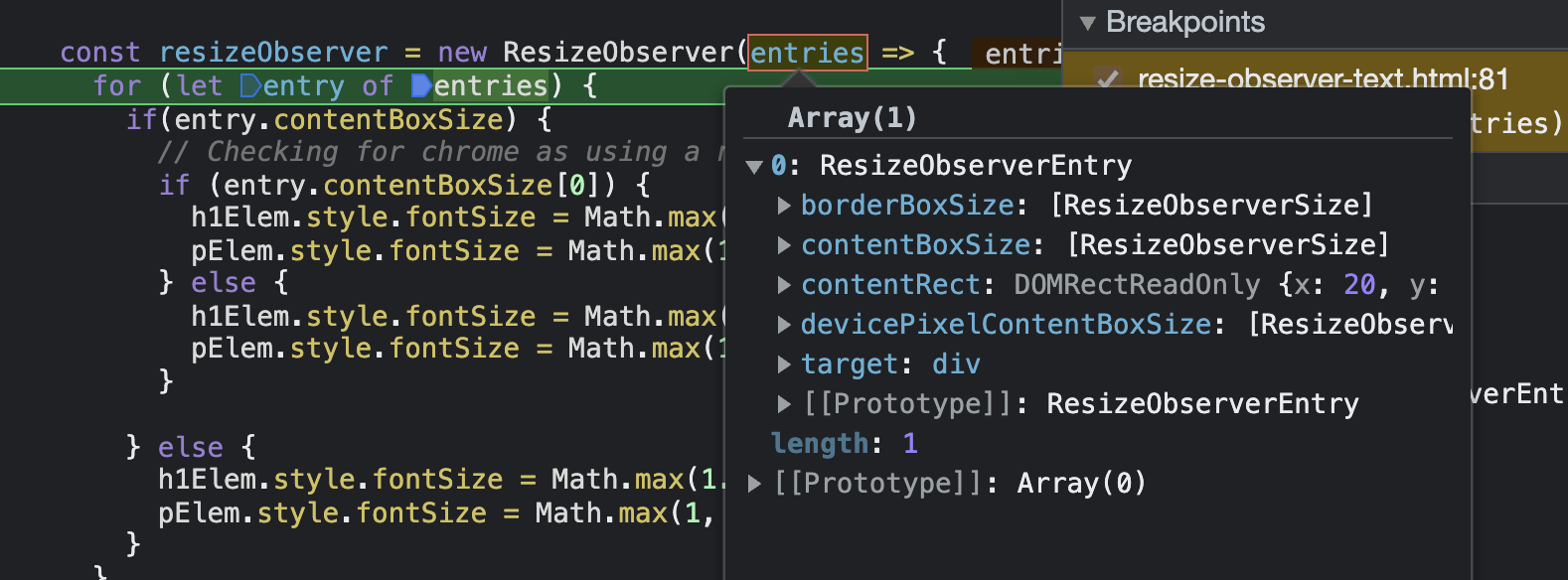Let's take a look at ResizeObserver
Syntax from MDN
Per name, ResizeObserver allows us to observe resizing of an element.
There is this demo example on MDN, in which ResizeObserver is used to change fontSize by listening to container’s size changes.
Syntax is straightforward, all we need is to set up a callback and observe() the target element.
js
js
The callback is called with entries containing size info.

Timing
ResizeObeserver callback is triggered after layout and before paint in Event Loop model.
For more on this, I suggest reading this article about event loop (TBH, I still cannot explain it very well though I have read it many times)
Actually about the timing, the spec has clear definition.
Simply speaking, it checks all the ResizeObserver and see if callback should be run.
Wait, what does depth do here?
Infinite loop problem
Yeah, you might have already noticed it. If we change some style in the ResizeObserver callback, it might lead to another resize event and thus creating infinit loop.
And depth is the internal implementation to avoid this issue.
In each iteration of step 5, depth is set to new and shallower depth, so even if we try to trigger size change in the callback, it will be processed in next round if the changes are not in the children.
Reasonable! Who would do that in reality? Yes, me! Below is a modified example.
diff
diff
We change container size and color of h1 to random color in the callback.
Since h1’s font size is changed as well, its resize event triggers our newly added observer in which color is set to black.
If infinite loop is not handled, we would expect the fullscreen container to pop up instantly.
But please open the demo link and try it yourself.
- because of infinite loop is guarded, even though we changed the size of container, it is processed in next round, so actually we see a smooth animation of enlarging.
- because resize event of children in the callback is processed, we see the color of h1 always be black until the last frame where h1 doesn’t have size change so color is set to random.
That’s it, hope this blog helps you understand ResizeObserver better, especially the internals.
